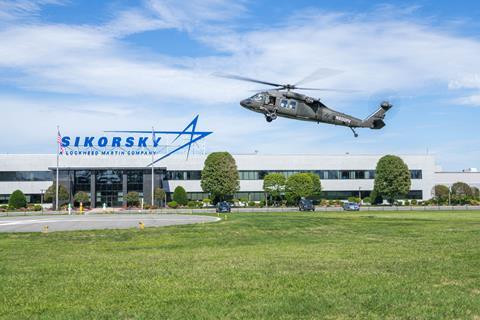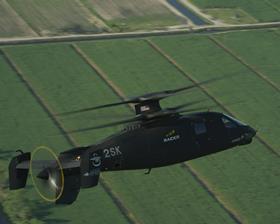Rotorcraft manufacturer Sikorsky has a new boss, amid a reshuffling of portfolio executives within parent company Lockheed Martin.
Paul Lemmo, who has led Sikorsky since 2021, was replaced in that role on 10 June by Richard Benton, another long-time figure at Lockheed. Most recently, Benton oversaw the defence giant’s training and logistics division in Orlando, Florida.
“I am eager to meet the Sikorsky team and get to know my new teammates,” Benton wrote in a 14 June LinkedIn post.
Lemmo, who leaves Sikorsky after three-and-a-half years, now leads Lockheed’s integrated warfare systems and sensors (IWSS) unit, a business he previously managed from 2018 to 2021, according to his LinkedIn page.

“It was an honour and privilege to lead the dynamic team at Sikorsky,” Lemmo writes in the post. “I am grateful to have shared in your rich legacy of pioneering flight solutions.”
He takes over at IWSS from Chauncey McIntosh, who will now be deputy general manager of Lockheed’s F-35 fighter programme – arguably the military airframer’s most-significant product.

Interestingly, the change of leadership at Sikorsky also comes with a new title for the top job.
During his tenure, Lemmo occupied the position of president of the Lockheed subsidiary. By contrast, Benton assumes the role of vice-president and general manager.
That styling is more in-line with Lockheed’s other business units, which do not have the unique branding of Sikorsky, which Lockheed acquired in 2015 for $9 billion.
Lockheed tells FlightGlobal the new leadership appointments are part of an internal collaboration initiative to develop and deliver integrated mission solutions to customers.
”Leveraging talent from across Lockheed Martin is not only a best practice, but also a testament to the power of robust and intentional talent development across the enterprise,” the company said on 20 June.
Benton takes over the rotorcraft line of business at a time of transition for Sikorsky. The company is potentially facing a protracted period without new design work following the cancellation of the US Army’s Future Armed Reconnaissance Aircraft in February and Sikorsky’s loss to rival Bell in the Future Long-Range Assault Aircraft competition.
Lemmo in April acknowledged the challenge that situation poses but said Sikorsky is optimistic about the prospects for its a new “rotor-blown-wing” design, development of which is being funded under a competitive programme within the US Defense Advanced Research Projects Agency.
“We are absolutely looking into UAVs,” Lemmo said at the US Army’s annual aviation summit in April, referencing the rotor-blown-wing concept.
He described the uncrewed craft as a tail-sitting flying wing that uses rotors, rather than jet engines, to generate thrust and lift. The rotors blow air over the tail-sitting wing for vertical launch, with the entire aircraft subsequently rotating for horizontal flight. Flight testing on that programme is already underway.
Sikorsky is also among six firms competing in a tender from the NATO Support and Procurement Agency to develop a Next Generation Rotorcraft Capability that could eventually replace thousands of helicopters currently operated by NATO member states. The Sikorsky bid will be based around the company’s proprietary X2 compound coaxial technology.
The vertical-lift pioneer also boasts a robust backlog of orders for its exiting aircraft, particularly for its venerable UH-60 Black Hawk, which continues to secure new customers around the world.
Other active lines of business for Sikorsky include production the US Marine Corps’ heavy-lift CH-53K King Stallion, a re-capitalisation and likely expansion of the US Coast Guard’s MH-60T Jayhawk fleet and delivery of the HH-60W Combat Rescue Helicopter to the US Air Force.































